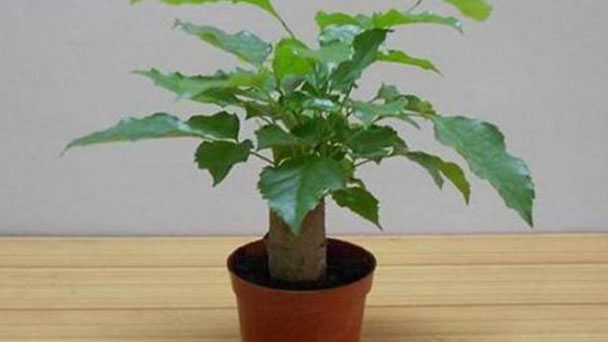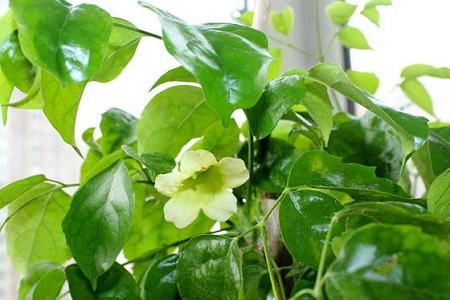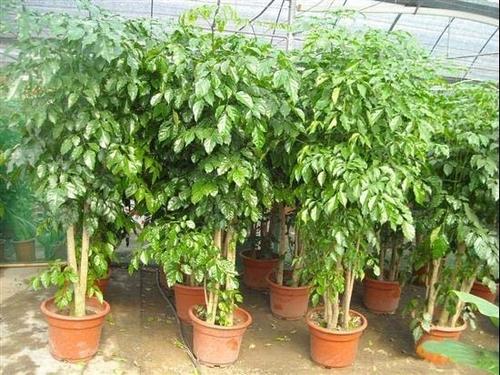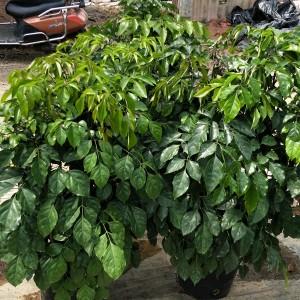How to care for Radermachera Hainanensis
Written by Maggie
Mar 16 2021

Radermachera hainanensis is a plant suitable for growing in the pot and perfect for decorating our home. Many people like to grow it at home. However, many problems occur when growing it. How to care for Radermachera hainanensis leaf drying or falling? Here are some caring tips.

How to care for Radermachera hainanensis leaf drying
If Radermachera hainanensis has dry leaves due to excessive air drying, it is necessary to spray water on its leaves in time. When watering is too much or fertilizing is too much, the best treatment method is to transplant the plant into the new basin-soil. When radermachera hainanensis has leaf spot disease, 50% carbendazir liquid can be used and sprayed once a week.
When we care for Radermachera plant, how to deal with the occurrence of radermachera hainanensis leaf drying? The first thing to be known is that the reasons for the occurrence of Radermachera hainanensis leaf drying may be caused by excessive air drying, excessive watering, improper fertilization and disease infeage.
Radermachera hainanensis is a kind of plant that likes to grow in wet environment, and the humidity is best maintained at about 75%. If the air is too dry and causes the dry leaves of Radermachera hainanensis, it is necessary to spray water on the leaves in time to keep the leaves wet, otherwise the condition of Radermachera hainanensis withered leaves will be aggravated.
While when adding water or fertilizing Radermachera hainanensis, if the correct method is not paid attention to, excessive or frequent fertilizer water will easily lead to basin water accumulation or fertilizer accumulation, and the root system cannot breathe. At this time, the best treatment method is to transplant Radermachera hainanensis into the new soil.
When we care for Radermachera plant, leaf spot disease was also easy to develop. For Radermachera hainanensis, it was a very common disease, and the most obvious symptom of this disease was the leaf wilt that led to Radermachera hainanensis. When Radermachera hainanensis was diseased, it could be sprayed with 50% of the polybalm solution once a week.
If Radermachera hainanensis appears to lose leaves, it may be because the air is too dry, because Radermachera hainanensis is a kind of plant that likes wet air environment, or the root system cannot provide nutrients to the branches normally when overwatered, but too much or too little application of fertilizer, as well as the presence of leaf spot disease will all cause the Radermachera hainanensis to lose leaves.

How to care for Radermachera Hainanensis losing leaves
1. Air humidity
What happens when Radermachera hainanensis loses its leaves during the breeding process? In fact, this may be caused by the extremely dry air. As a kind of plant that prefers a humid air environment, it is better to have 75% air humidity. In the process of curing, if the air is extremely dry, it is easy to cause the Radermachera hainanensis to have withered leaves or lose leaves.
2. Watering
In the growing Radermachera hainanensis process, if there is too much water, resulting in the pelvic floor water, basin soil for a long time too wet, then it is easy to cause the root system of Radermachera hainanensis not to breathe normally. In severe cases, root rot may occur, resulting in the root system unable to provide nutrients to the plant normally, and large areas of leaf fall.
3. Fertilization
Fertilizer is an important element to maintain the normal growth of plants, whether too much or too little fertilizer will have a certain impact on plant growth. When too much fertilizer is applied in the basin, it is easy to accumulate fertilizer, which leads to burning of roots. However, without fertilizer for a long time, the plant cannot supply the nutrients needed by the branches and leaves, which can cause the leaves to wither and even fall off.
4. Disease infestation
During the growth of Radermachera hainanensis, this plant is vulnerable to the invasion of leaf spot disease, and leaves will also be lost when Radermachera hainanensis suffers from this disease. If you want to treat the disease, you need to cut off the branches and leaves of the disease, and spray with 50% carbapenems solution once every two weeks. Generally, you can control the disease by spraying 3 to 4 times.

Latest Updated
- Benefits of Bugleweed - 7 Science-backed Health Benefits
- Bugleweed Dangers & Side Effects - Is It Poisonous?
- How to Plant Evergreen Trees - What You Should Know
- When to Plant Evergreens - Grow Guide for Evergreen Trees
- 12 Wonderful Evergreen Shrubs for Your Garden
- 12 Popular Evergreen Plants with Pictures for Beginners
- When And How To Prune A Lilac Bush Like a Pro
- How to Grow & Care for Lilac Vine (Hardenbergia Violacea)
- Japanese Lilac Tree (Syringa Reticulata) Care & Propagation Guide
- Shumard Oak Pros and Cons - What to Know
Popular Articles
- Winter maintenance of Antirrhinum Majus
- How to Grow Terminalia Mantaly Tree
- How to Grow and Care for Crossostephium Chinense
- How to grow Antirrhinum Majus in spring
- Peristeria Elata (Dove Orchid) Profile: Info & Care Guide
- Underwatered Snake Plant (Sansevieria Trifasciata) - Signs And How To Fix
- How to Care for Brazilian Jasmine Plant (Mandevilla Sanderi)
- How to Grow & Care for Graptopetalum Purple Delight in Summer
- Rosa Chinensis (China Rose): Plant Growing & Care Tips
- How to Care for Baby Sun Rose (Aptenia Cordifolia)